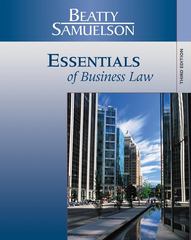
Locate the major barriers to global economic flows. Are they effective? Are they necessary? Examine the linkages between the process of "race to the bottom" and "upgrading." Examine the linkages between the process of outsourcing and the "race to the bottom. " Examine globalization in the sphere of consumption as well as production. Answer The three major barriers to international trade are natural barriers, such as distance and language; tariff barriers, or taxes on imported goods; and nontariff barriers. The nontariff barriers to trade include import quotas, embargoes, buy-national regulations, and exchange controls. Tariffs, quotas, and non-tariff barriers lead too few of the economy's resources being used to produce tradeable goods. An export subsidy can also be used to give an advantage to a domestic producer over a foreign producer. Impact: Global flows of all types support growth by raising productivity, and data flows are amplifying this effect by broadening participation and creating more efficient markets. Necessity: There are numerous benefits of a global economy, which include: Free trade: Free trade is an excellent method for countries to exchange goods and services. Increased investment: Due to the presence of global economy, it has become easier for countries to attract short-term and long-term investment. Process of \"race to the bottom" and "upgrading": As "climb to the top" accounts suggest, foreign direct investment inflows are positively and significantly related to the rights of workers. But at the same time, trade competition generates downward "race to the bottom" pressures on collective labor rights. Linking trade concessions to compliance with internationally recognised labour standards is referred to as a 'social clause'. The social clause is usually depicted as causing division between the (rich) global North and the less-industrialised global South. linkages between the process of outsourcing and the "race to the bottom: A race to the bottom refers to heightened competition between nations, states, or companies, where product quality or rational economic decisions are sacrificed in order to gain a competitive advantage or reduction in product manufacturing costs.The race to the bottom refers to a competitive situation where a company, state, or nation attempts to undercut the competition's prices by sacrificing quality standards or worker safety (often defying regulation), or reducing labor costs. A race to the bottom can also occur among regions. For example, a jurisdiction may relax regulations or cut taxes and compromise the public good in :In :I'pmnf tn :I'rnr't invncfmnnf curl": :Ic flu:- l'nn'lrlinri hi: :I npuT fnr'fnrv nr r'nrnnrnfn nffirn








